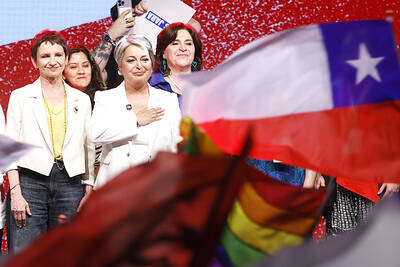Young people living with higher levels of air pollution are significantly more likely to have psychotic experiences, according to the first study of the issue.
Researchers analyzed the experiences of more than 2,000 17-year-olds across England and Wales, and found that those in places with higher levels of nitrogen oxides had a 70 percent higher chance of symptoms such as hearing voices or intense paranoia.
People growing up in cities were already known to have more psychotic experiences than those outside urban areas and the new work suggests toxic air is one potential reason, but the type of study done cannot prove a causal link, as other factors such as noise could be important.
Psychotic experiences are much more common in adolescents than in adults, but those having these symptoms when young are more likely to develop serious mental illnesses later.
With more people around the world living in cities every year, scientists are particularly keen to uncover the reasons for mental ill health in urban centers.
The study took into account other potential causes of psychotic experiences, such as smoking, alcohol and cannabis use, family income and psychiatric history, and measures of neighborhood deprivation.
“[Nitrogen oxides] explained about 60 percent of the association between urban living and psychotic experiences,” said Joanne Newbury at King’s College London, who led the research.
Other factors could include genetic susceptibility and experience of crime.
Nitrogen oxides come largely from diesel vehicles and are at illegal levels in most British towns and cities, with the British government having lost three times in the high court over its failure to cut pollution.
Research is linking air pollution with an increasing range of ill health, including reduced intelligence, dementia and depression, while other work has revealed air pollution can reach the brain.
“There seems to be some link between exposure to air pollution and effects in the brain, and this [new research] is perhaps another example of this,” said Frank Kelly at King’s College London, also part of the research team. “Children and young people are most vulnerable to the health impacts of air pollution owing to the juvenility of the brain and respiratory system.”
The new study, published in the journal Jama Psychiatry, combined high-resolution air pollution data and psychotic experiences disclosed by the adolescents in private interviews.
One-third of the young people lived in urban areas, with one-fifth being rural and the rest suburban.
Overall, 30 percent of the young people reported at least one psychotic experience, a rate considered normal for teenage years, but psychotic experiences were significantly more common among teenagers living in the top 25 percent most polluted places.
“In areas with the highest levels of [nitrogen oxides], there were 12 teens who reported psychotic experiences for every 20 teens who did not,” Newbury said. “In areas with lower levels, there were only seven teens who reported psychotic experiences for every 20 teens who did not.”
The researchers also found a link to small particle pollution, with psychotic experiences 45 percent more common for those teenagers exposed to higher levels.
However, they said that while this first study provided good evidence, it was important other studies were done to confirm the findings.
“The study makes a valuable contribution to the growing body of evidence that air pollution may affect more than just cardiovascular and respiratory health,” said Stefan Reis, head of atmospheric chemistry and effects at the Centre for Ecology & Hydrology. “This new study makes a compelling case to investigate a range of mental health outcomes of air pollution exposure.”
“People living in cities are subjected to high concentrations of toxic particles and gases from exhaust fumes on a daily basis,” said Ellen Wood of the Doctors Against Diesel campaign group. “This study adds to the growing evidence that air pollution could have devastating and far-reaching consequences on our physical and mental health, that is put at further risk if policymakers do not address this public health emergency.”
“We urgently need to see policies that equitably reduce polluting vehicles on our roads, and replace them with affordable, sustainable and accessible public transport,” said Rebecca Daniels, at the global health charity Medact.

DISASTER: The Bangladesh Meteorological Department recorded a magnitude 5.7 and tremors reached as far as Kolkata, India, more than 300km away from the epicenter A powerful earthquake struck Bangladesh yesterday outside the crowded capital, Dhaka, killing at least five people and injuring about a hundred, the government said. The magnitude 5.5 quake struck at 10:38am near Narsingdi, Bangladesh, about 33km from Dhaka, the US Geological Survey (USGS) said. The earthquake sparked fear and chaos with many in the Muslim-majority nation of 170 million people at home on their day off. AFP reporters in Dhaka said they saw people weeping in the streets while others appeared shocked. Bangladesh Interim Leader Muhammad Yunus expressed his “deep shock and sorrow over the news of casualties in various districts.” At least five people,

LEFT AND RIGHT: Battling anti-incumbent, anticommunist sentiment, Jeanette Jara had a precarious lead over far-right Jose Antonio Kast as they look to the Dec. 14 run Leftist candidate Jeannette Jara and far-right leader Jose Antonio Kast are to go head-to-head in Chile’s presidential runoff after topping Sunday’s first round of voting in an election dominated by fears of violent crime. With 99 percent of the results counted, Jara, a 51-year-old communist running on behalf of an eight-party coalition, won 26.85 percent, compared with 23.93 percent for Kast, the Servel electoral service said. The election was dominated by deep concern over a surge in murders, kidnappings and extortion widely blamed on foreign crime gangs. Kast, 59, has vowed to build walls, fences and trenches along Chile’s border with Bolivia to

DEATH SENTENCE: The ousted leader said she was willing to attend a fresh trial outside Bangladesh where the ruling would not be a ‘foregone conclusion’ Bangladesh’s fugitive former prime minister Sheikh Hasina yesterday called the guilty verdict and death sentence in her crimes against humanity trial “biased and politically motivated.” Hasina, 78, defied court orders that she return from India to attend her trial about whether she ordered a deadly crackdown against the student-led uprising that ousted her. She was found guilty and sentenced to death earlier yesterday. “The verdicts announced against me have been made by a rigged tribunal established and presided over by an unelected government with no democratic mandate,” Hasina said in a statement issued from hiding in India. “They are biased and politically motivated,” she

It is one of the world’s most famous unsolved codes whose answer could sell for a fortune — but two US friends say they have already found the secret hidden by Kryptos. The S-shaped copper sculpture has baffled cryptography enthusiasts since its 1990 installation on the grounds of the CIA headquarters in Virginia, with three of its four messages deciphered so far. Yet K4, the final passage, has kept codebreakers scratching their heads. Sculptor Jim Sanborn, 80, has been so overwhelmed by guesses that he started charging US$50 for each response. Sanborn in August announced he would auction the 97-character solution to K4